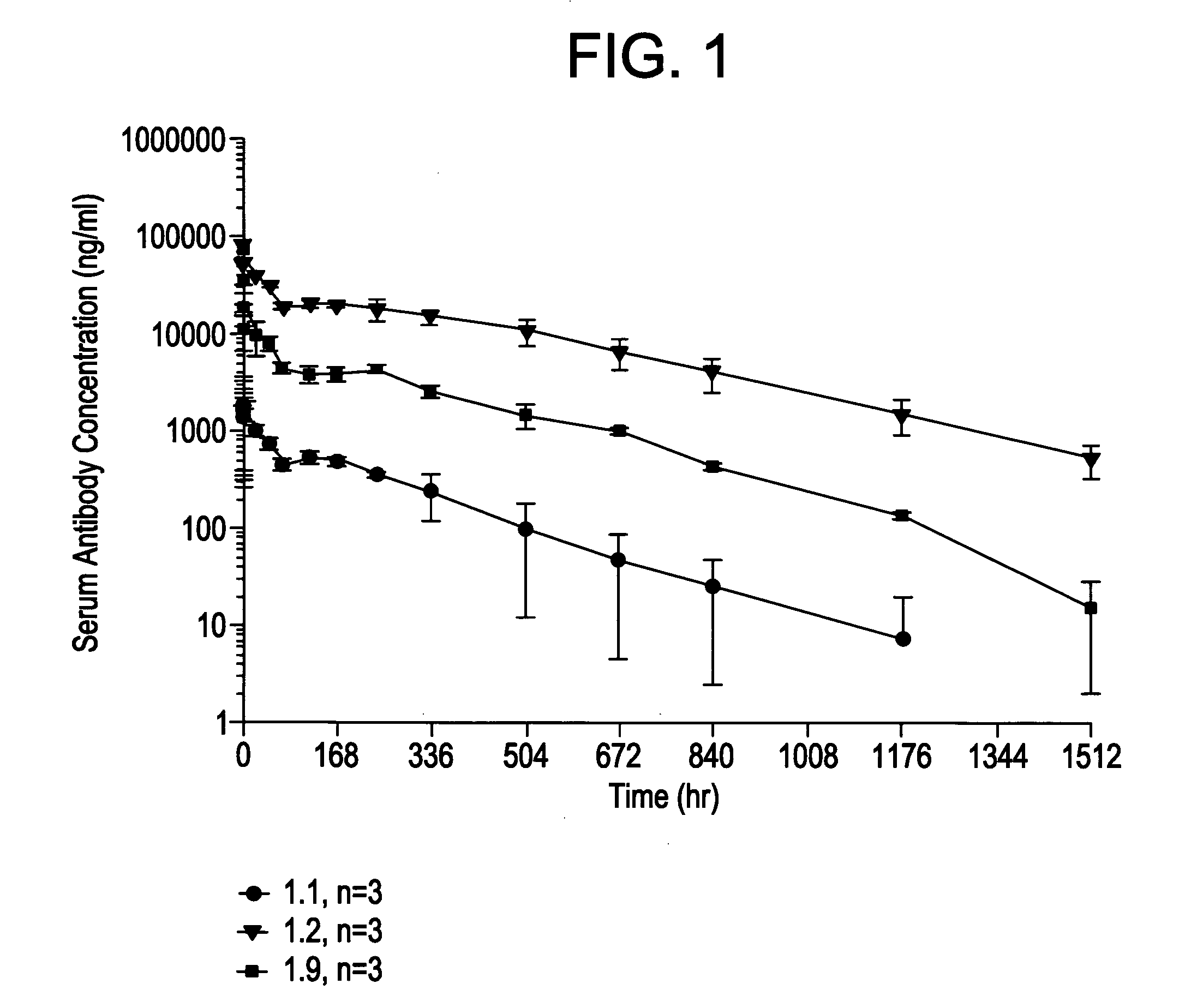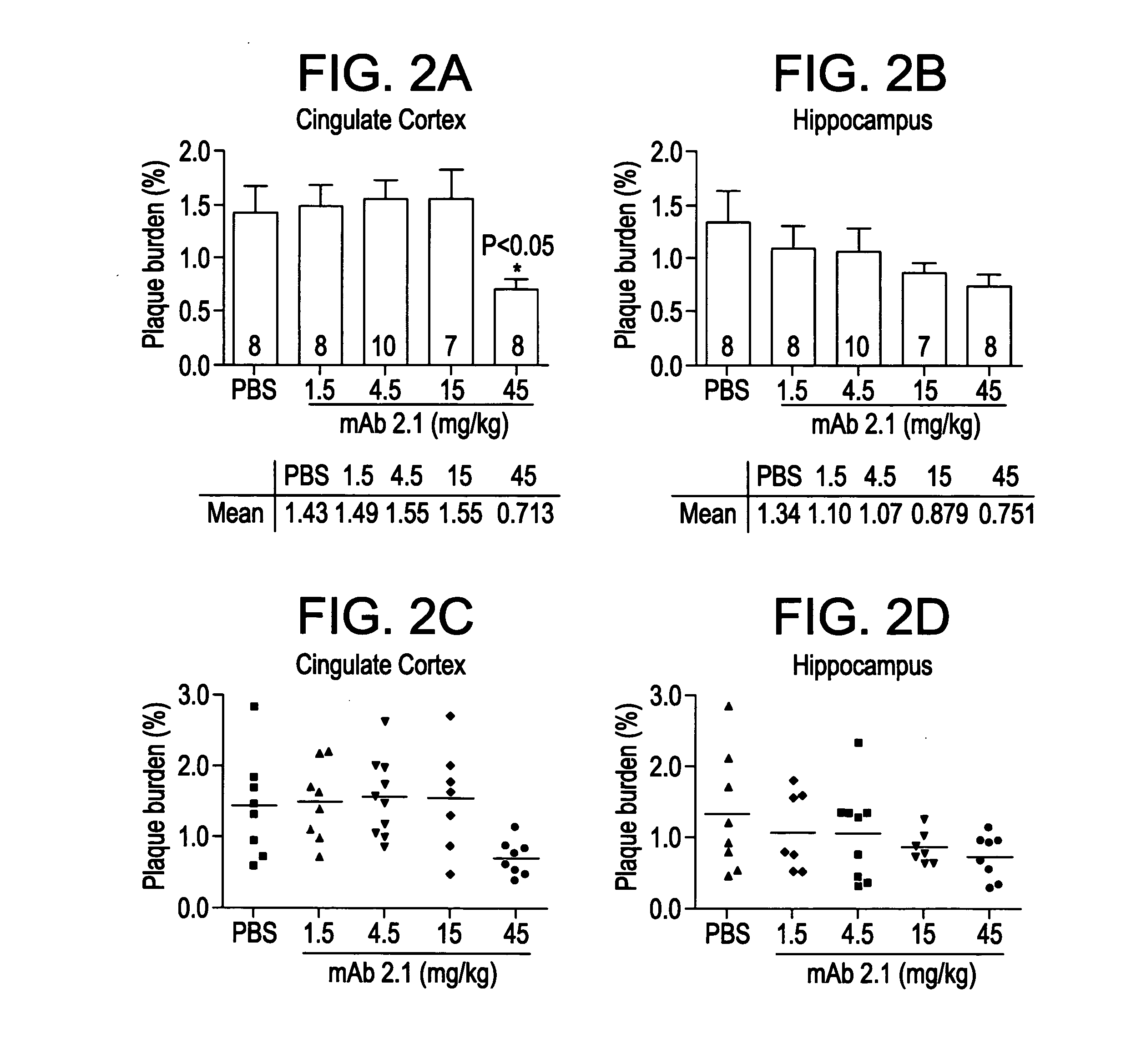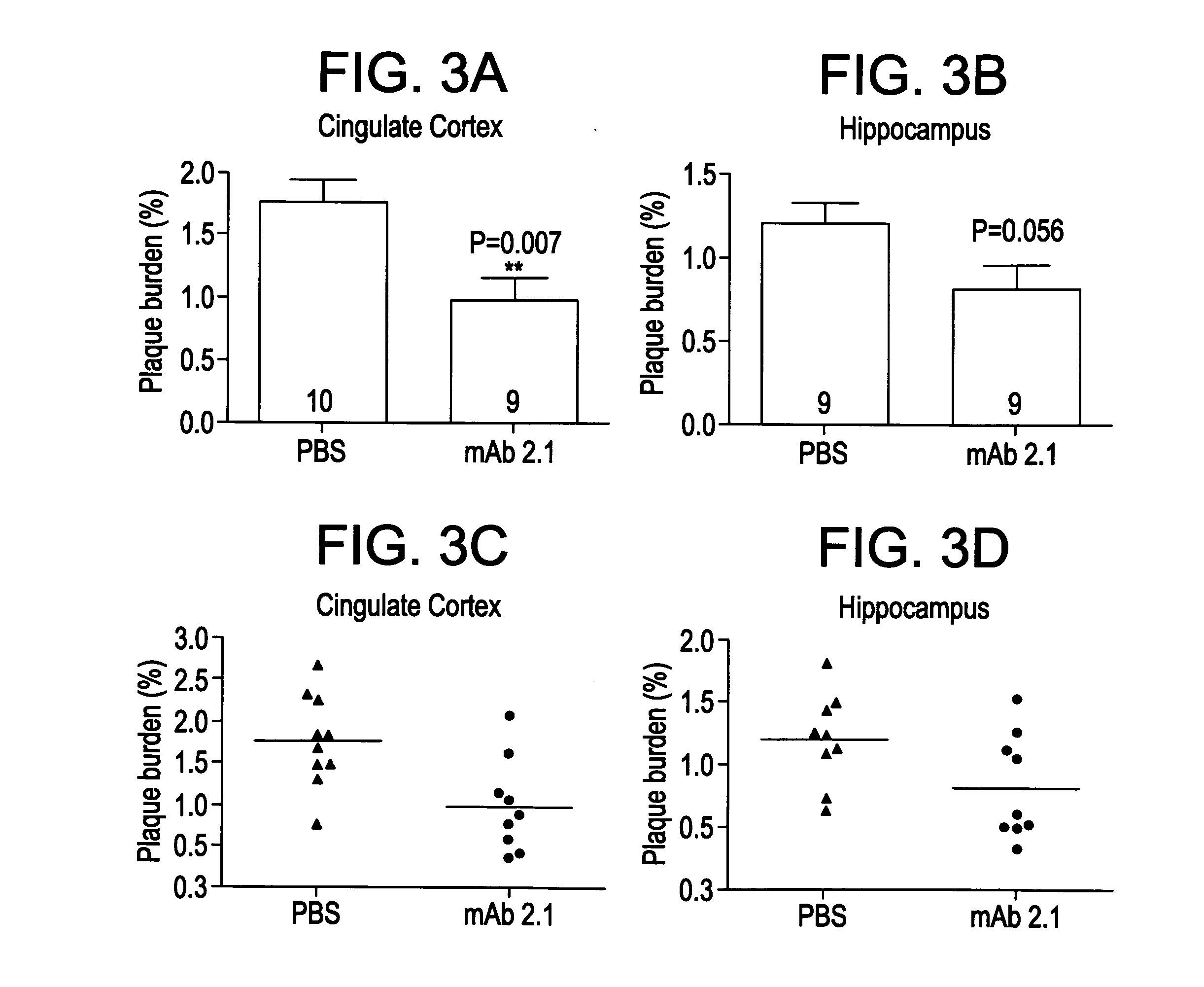Anti-amyloid antibodies and uses thereof
a technology of amyloid antibodies and antibodies, applied in the field of amyloidbeta antibodies, can solve the problems of high nursing home costs for society, high burden on family caregivers, and high risk of health care crisis
- Summary
- Abstract
- Description
- Claims
- Application Information
AI Technical Summary
Benefits of technology
Problems solved by technology
Method used
Image
Examples
example 1
Production and Purification of Anti-Amyloid Antibodies
[0238]Xenomouse® IgG1-κ, IgG1-κλ, and IgG4-κλ mice were generated generally as described previously in Mendez et al., Nat. Genet. 15:146-156 (1997) and immunized with Aβ40 fibrils, Aβ42 fibrils, Aβ40 monomer and Aβ42 monomer, respectively, emulsified in complete Freund's adjuvant for primary immunization and in incomplete Freund's adjuvant for subsequent injections using standard methods. The mice were immunized twice weekly, via footpad administration, with each mouse receiving 100 μg fibrillar Aβ or 20 μg monomeric Aβ per injection. Serum antibody titers were measured every 2 weeks. Monomeric Aβ elicited a weaker immune response compared to Aβ fibrils.
[0239]Hybridomas were generated by fusing spleen and / or lymph node cells from seropositive animals with sp2 / 0 myeloma cell line as described in MendeZ et al., supra. Supernatants from hybridomas were screened for binding to fibrillar Aβ (mixture of Aβ40 and Aβ42) in an ELISA forma...
example 2
In Vitro Binding of Antibodies
[0241]This example evaluates the in vitro binding of the antibodies 1.1, 1.2, 1.7 and 1.9 to Aβ (monomer and fibrils) and to collagen fibrils. All candidates were run at multiple concentrations in order to obtain concentration response information (where response=binding). From the concentration response curve one can determine an EC50 (the concentration that provokes a response halfway between baseline and maximum response). The EC50 is reflective of binding affinity; however, under the conditions used here, it is not a direct measure of KD. As a negative control, collagen fibrils were used to assess non-specific binding of antibodies.
[0242]The fibrils (Aβ or collagen) were diluted to 10 μg / ml in water and mixed thoroughly. The solution was aliquoted into the wells of a microtiter plate (Immulon-2; VWR; Cat # 62404-972) at 50 μl per well (resulting in 0.5 μg fibrils / well final). The plate was dried overnight by being placed uncovered in a 37° C. incuba...
example 3
Kinetic Analysis of Antibody Binding to Human AS-Peptides
[0247]Kinetic binding analysis was performed using BIAcore to study the interaction of antibodies 1.1, 1.2, 1.7 and 1.9 with human Aβ40 and Aβ42 fibrils and monomers.
[0248]Preparation of Biacore Chip Surfaces: Immobilization of Proteins to a BIAcore sensor chip (CM5) was performed according to manufacturer's instructions. Briefly, carboxyl groups on the sensor chip surfaces were activated by injecting 60 μL of a mixture containing 0.2 M N-ethyl-N′-(dimethylaminopropyl) carbodiimide (EDC) and 0.05 M N-hydroxysuccinimide (NHS). Specific surfaces were obtained by injecting rProtein G (Pierce), goat anti-mouse Fc (Jackson Immuno Research Lab) or Aβ aggregates diluted in 10 mM acetate, pH 4.0 at concentrations between 5 and 20 μg / mL. Excess reactive groups on the surfaces were deactivated by injecting 60 μL of 1 M ethanolamine. Final immobilized levels were about 10000 resonance units (RU) for the Protein G and anti-mouse Fc surfac...
PUM
| Property | Measurement | Unit |
|---|---|---|
| Fraction | aaaaa | aaaaa |
| Fraction | aaaaa | aaaaa |
| Dimensionless property | aaaaa | aaaaa |
Abstract
Description
Claims
Application Information
 Login to View More
Login to View More - R&D
- Intellectual Property
- Life Sciences
- Materials
- Tech Scout
- Unparalleled Data Quality
- Higher Quality Content
- 60% Fewer Hallucinations
Browse by: Latest US Patents, China's latest patents, Technical Efficacy Thesaurus, Application Domain, Technology Topic, Popular Technical Reports.
© 2025 PatSnap. All rights reserved.Legal|Privacy policy|Modern Slavery Act Transparency Statement|Sitemap|About US| Contact US: help@patsnap.com



